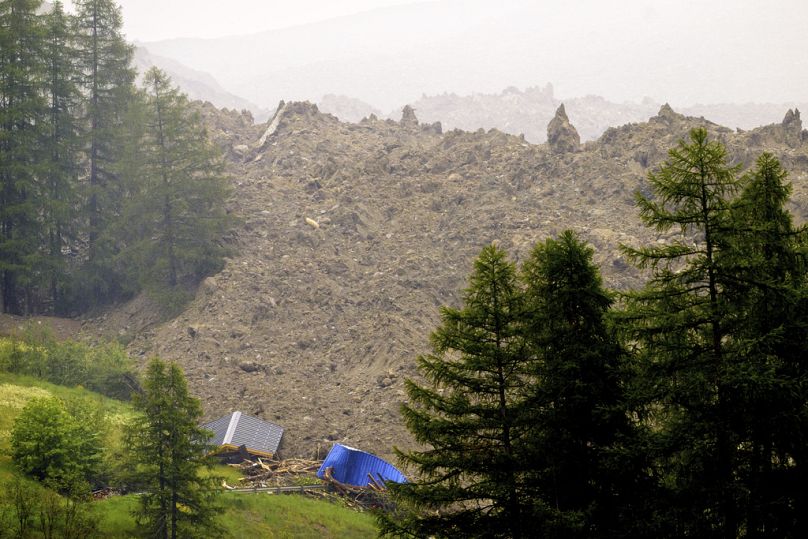A massive glacier collapsed down a Swiss mountainside on Wednesday, burying the Alpine village of Blatten, which officials had evacuated earlier this month as a safety measure.
Regional police said a 64-year-old man was reported missing, and search and rescue operations involving a drone with thermal camera were under way.
“What I can tell you at the moment is that about 90% of the village is covered or destroyed, so it's a major catastrophe that has happened here in Blatten," said Stephane Ganzer, the head of security in the southern Valais region.
Footage shared on social media and Swiss television showed the mudslide near Blatten, located in the southern Lötschental valley, where residences and structures were partially submerged under a large mass of sludge.
The regional government announced in a statement that a significant portion of the Birch Glacier located above the village had disintegrated, resulting in a landslide that also covered the nearby Lonza River bed, thereby increasing the risk of dammed water flows.

“There’s a risk that the situation could get worse,” Ganzer said, alluding to the blocked river.
He added that the army had been mobilised following previous indications that the glacier's movement was speeding up.
During a press conference, Swiss Environment Minister Albert Rösti expressed his sorrow over what he described as "an extraordinary event". He stated that the government would implement measures to assist the villagers who have lost their homes.
In the past few days, officials have ordered the evacuation of approximately 300 people, along with all livestock, from the village due to concerns that the 1.5 million cubic metre glacier may be on the verge of collapsing.
Swiss glaciologists have consistently expressed concerns about a thaw observed in recent years, largely attributed to global warming, which has accelerated the retreat of glaciers in Switzerland.
The landlocked Alpine nation has the highest number of glaciers among all European countries and experienced a 4% loss of its total glacier volume in 2023. This marked the second-largest decrease in a single year, following a 6% reduction in 2022.







